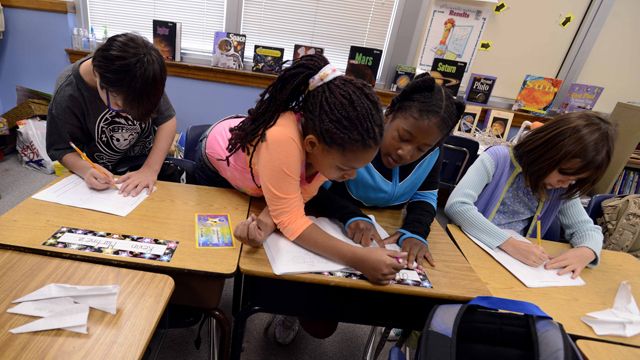This post first appeared at DEMOS’ PolicyShop blog.

What’s the biggest change afoot in education today: The rise of online courses? The charter school movement? The Common Core? Or how about this one: The fall of the anachronistic, industrial-era idea that only a K-12 education should be freely provided by government.
The dated K-12 regime is under attack from two directions as the push for universal pre-K gains steam and as calls mount for making college free. A new education norm can be glimpsed on the horizon: P-16, free for all Americans.
Let’s start with the momentum behind pre-K, which seems to be growing by the day, and not just in blue states like New York or the lofty reaches of presidential rhetoric. Oklahoma and Georgia have been leaders on this issue, which often transcends partisanship once you get beyond the Beltway. As The New York Times reported recently:
enrollment in state-funded preschool has more than doubled since 2002, to about 30 percent of all 4-year-olds nationwide. In just the past year, Alabama, Michigan, Minnesota, Montana and the city of San Antonio have enacted new or expanded programs, while in dozens of other places, mayors, governors and legislators are making a serious push for preschool.
The push for some degree of universal college is growing, too — and also comes from unusual places. Just the other day, Tennessee governor Bill Haslam, a Republican, called for making two years of college or technical school free for all in that state — paid for by lottery funds. A similar plan is moving forward in the Mississippi legislature, another red state.
Other states are exploring free community college, as well, including Oregon. And that same state, along with a few others, is considering a “Pay It Forward” plan that would allow students to go to college now and pay later, through a percentage of their earnings. Pay It Forward plans aren’t free, and are controversial as a result. But they speak to the same idea: That college has become such a prerequisite of a middle class life that there shouldn’t be any financial barriers to entering.
Of course, these pushes to make college more accessible are playing out against the backdrop of big cuts to state higher education over the past five years, so in the larger picture we’re actually moving in the wrong direction. In state after state, public universities that once were practically free are now beyond reach for some students.
That said, many more high school graduates are attending college than was the case a few decades ago, and the norms around higher ed have fundamentally shifted in the past generation. When was the last time you heard the phrase “college kid?”
All of this is reminiscent of what happened with high school, starting a century ago. High school used to be reserved for a subset of students, while most kids were expected to start working after eighth grade. In 1910, less than 10 percent of teenagers attended high school. But by 1940, that figure was up to 73 percent.
The so-called “high school movement” was driven by a lot of factors, including a progressive belief in more social mobility, but also the recognition that the shift to industrial society required a more educated workforce. By the mid-20th century, K-12 had become the norm.
Now it’s time to move to a new education norm, with another big expansion of government’s role, and for similar reasons. Many progressives are pushing for a P-16 system to create more equality of opportunity and upward mobility, while any number of pragmatic politicians and business leaders want to create a better educated workforce to fuel a high-skill economy. Haslam is an example of a governor who sees improving education as a way for a state to gain a competitive edge economically. Many politicians pushing pre-K also talk about human capital.
Maybe I’m overly optimistic, but my guess is that the K-12 regime will be extinct in a decade or two — and that, in the early 21st century, we won’t just see a big expansion of government’s role in the healthcare sector, but also in education.


